7 ways to keep your hamster happy
Keeping your hamster happy all year round is easier than you think. We walk you through everything you need to know
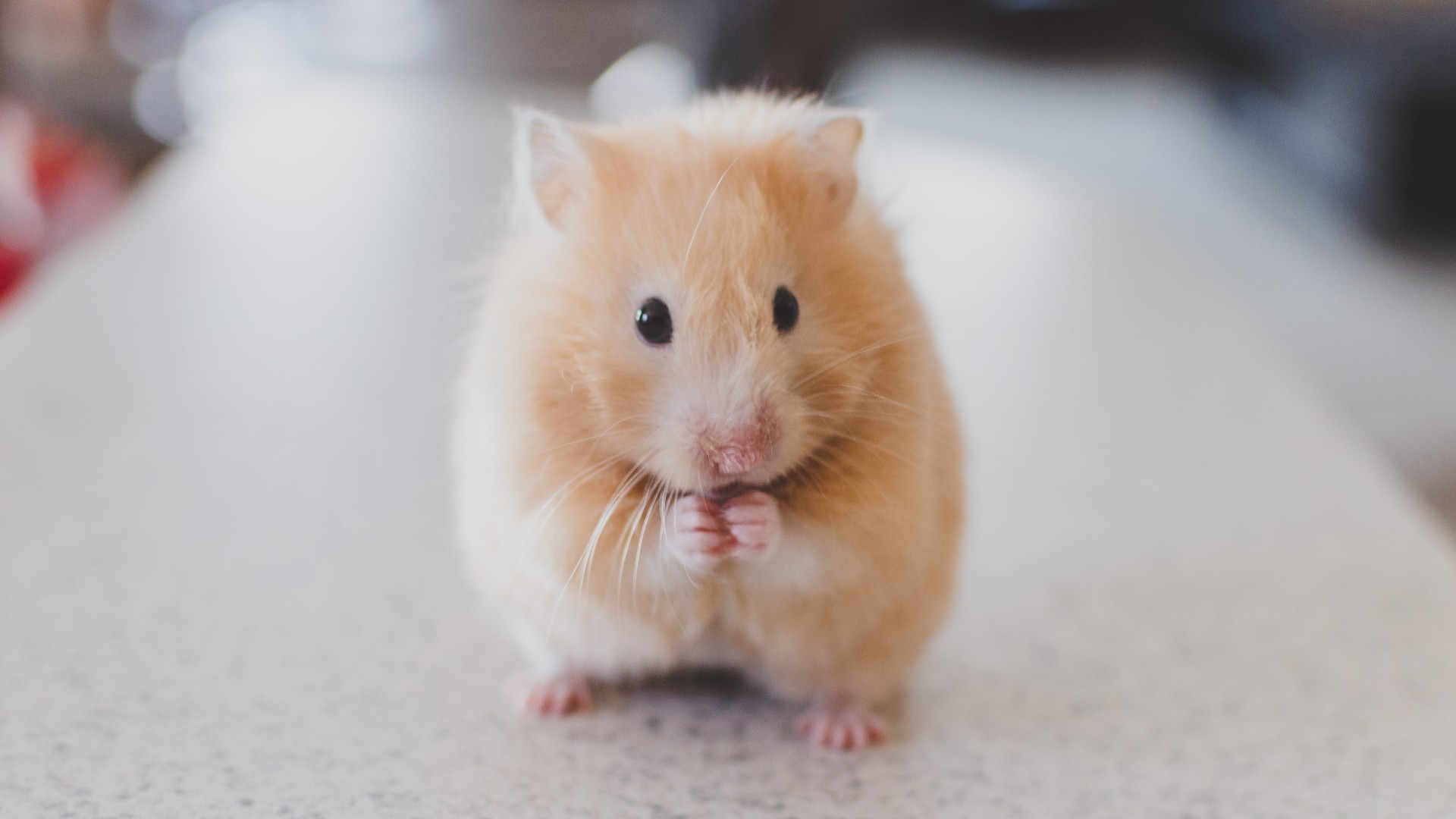
Finding new ways to keep your hamster happy is likely high on your list of priorities if you're the proud pet parent of this adorable pocket pet. While investing in one of the best hamster cages is certainly a good place to start, there are so many other simple tweaks you can make to ensure your ball of fur retains their zest for life.
Hamsters make for wonderful little companions. They’re affordable, super cute and they’re one of several small pets that are perfect for kids. But don’t let their petite size fool you, while they certainly won’t take up much space, hamsters need more than a cage to keep them happy and healthy.
Curious and incredibly playful, these little critters need a good selection of fun hamster toys to keep them mentally and physically stimulated. Beyond that, there are other ways you can keep your hammy happy, such as providing them with deep and comfortable bedding, delicious food, and plenty of hiding places in their habitat.
You’ll know that your hamster isn’t happy if they start displaying signs of stress, such as excessive digging, cage biting, and aggressive behavior. But fear not, wonderful pet parent, follow our top tips below for ways to keep your hamster happy and you’ll ensure your much-loved furry friend thrives all year round.
- How to bond with your hamster
- Why does my hamster climb the cage? (and how do I stop it?)
- How to find a lost hamster
How to tell if your hamster is happy
Before we look at all the things you can do to ensure your little ball of fur thrives, it’s a good idea to be aware of the signs that your hammy isn’t happy. Here’s a few common indicators to be on the lookout for:
- Hair loss or changes to their fur: If you’ve ever seen a cat over-grooming themselves, it’s almost always down to stress or boredom, and the same is true for our pocket pets. Hamsters may also try to pull their fur out, so if you notice bald spots or thinning fur, take note.
- Aggressive behavior: Hamsters aren’t naturally aggressive creatures, but they will often lash out when they’re feeling unhappy and this could come in the form of trying to bite your fingers when you reach into their cage.
- Cage biting: Frequently chewing on the bars of their cage isn’t normal behavior for hamsters, so if you notice that your hamster is biting their cage on a regular basis, unhappiness could well be to blame.
- Vocalizing: Hamsters are normally super quiet, except for at night when they’re scurrying about. But in terms of actually using their voice and making verbal noises, it’s quite rare for them to vocalize. If you find them being louder than usual, that’s something to pay attention to.
- Obsessive behavior: Is your hammy scurrying about in circles? Are they digging up every square inch of their cage? Are they engaging in repetitive behaviors like scratching and licking? It’s likely your hamster is trying to communicate something to you.
A happy hamster is one who displays all the normal behaviors that you’d expect to see a hamster display, such as grooming, digging, stretching and playing.
If you’ve noticed that your pocket pet is engaging in unusual or abnormal behaviors, check out our vet's guide to how to help a stressed hamster, which talks you through everything you need to know.
Get the best advice, tips and top tech for your beloved Pets
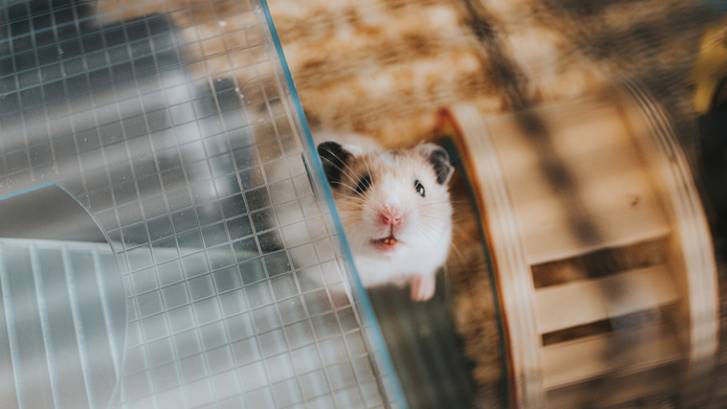
Ways to keep your hamster happy
There are so many great ways that you can keep your hamster happy, here are a few of our favorites:
1. A big cage
‘How big should a hamster cage be?' is a common question amongst pet parents who often understandably fall into the trap of thinking that a small creature only needs a small cage. While they are indeed petite in size, your pocket pet loves being able to play, dig and burrow, so a decent sized home is going to be essential.
You need to ensure that there’s enough space in their cage to pop in plenty of enrichment options to keep your hammy stimulated, plus plenty of room for them to run around in. If you’re looking for guidance and inspiration, be sure to check out our guide to how to set up a hamster cage.
2. Deep bedding
A well rested hamster is a happy hamster and when it comes to bedding, the deeper the better as far as your little pocket pet is concerned. These little guys love to burrow and they actually feel the safest and most secure when they have a deep bed that they can really snuggle down into and hide themselves away in.
We recommend that you avoid wood shavings, which aren’t ideal for your hammy’s health and opt for ink-free shredded paper instead. Kitchen towels and tissue are also brilliant as these are quite soft and do a good job of absorbing urine.
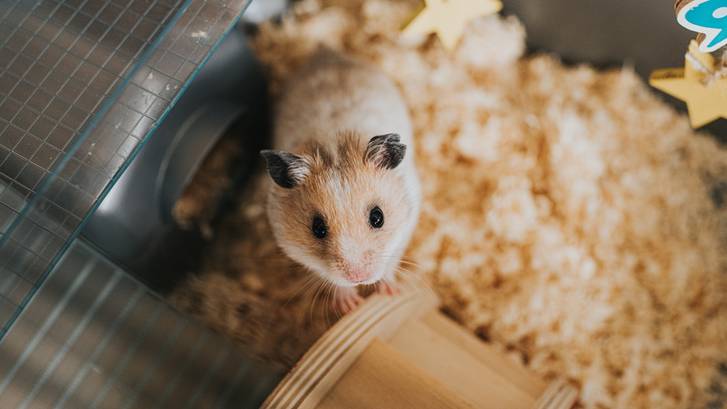
3. Plenty of enrichment
As we mentioned earlier, toys are essential when it comes to providing your hammy with the mental and physical stimulation they need to thrive. While you can certainly learn how to play with a hamster, most don’t like a lot of human attention or contact, so providing them with plenty of engaging toys that they can play with solo is always a good way to go.
When it comes to what to select, an exercise wheel is an absolute must. But you’ll find other options, such as tunnels, bridges, chew sticks and hammocks to be equally great choices. Basically, anything that taps into your hamster’s natural love of climbing, digging, chewing and burrowing will go down a treat.
4. Mouth-watering meals
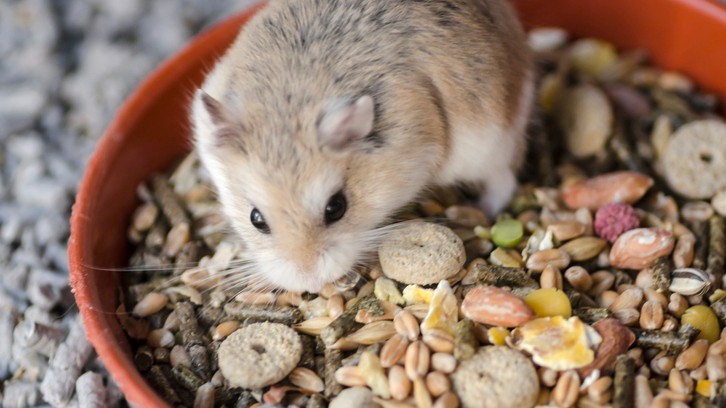
Nothing makes your hammy happier than tucking into some seriously delectable dishes, so providing them with plenty of nutritious, tasty food is an easy win when it comes to putting a smile on their little dial.
When it comes to planning their meals, a mixture of solid staples with some variety thrown in here and there is the secret to keeping mealtimes fun and interesting. Opt for a healthy seed mix as the basis of their diet and then add in small amounts of safe fruits and vegetables.
Hamsters also really love cheese, so a few small pieces of this every week will score you some major brownie points. For more information on creating the best diet for your pocket pet, our vet's guide to ‘what can hamsters eat?' has got you covered.
5. Create a natural habitat
When it comes to helping your hammy to feel at home, one of the easiest ways to do this is to create a habitat that closely mimics the natural environments that they evolved to live in.
Bring in things that your hammy would be exposed to if they were living in the wild, such as rocks, grass, willow, hay, soil and driftwood. Hamsters also love sand, so creating a sand bath that they can roll about in will be much appreciated.
And although you can absolutely buy a cage and then use the tips above to furnish it in a way that delights your pocket pet, if you love getting creative, why not try making one of these cool DIY hamster habitats?
6. Don’t clean their cage too often
We know, that sounds counterintuitive to keeping your hamster happy doesn’t it? While it’s important to know how to clean a hamster cage, a complete cage-clean is actually a super stressful experience for your pocket pet.
That’s because when you do a thorough clean, you’re removing their burrows and likely moving things about, which can freak your little fur friend out and cause them to feel anxious.
Do a spot-clean on a daily basis, such as removing any visible debris and food scraps and cleaning out their little box, but keep deep cleaning confined to once a month to minimize distress.
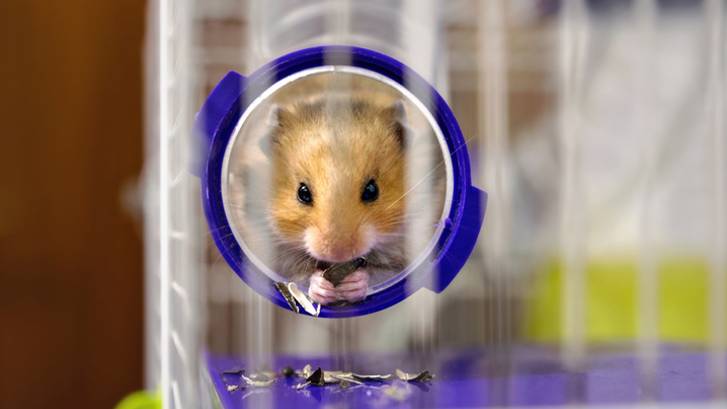
7. Let your hamster live alone
Although a lot of animals enjoy the company of others of their kind, hamsters are naturally very solitary creatures who prefer to live alone. When housed in pairs or groups, hamsters tend to become very stressed and will often fight one another, which is distressing for both them and you.
If you’re really keen on having more than one hamster, we recommend you house each in their own cage. Hamsters don’t get lonely like some other animals do, so they’ll be perfectly content in their own company. If anything, they’ll be thanking you for giving them the gift of a peaceful and quiet solitary life.
We've also answered How long do hamsters live? and Do hamsters hibernate?

Kathryn is a freelance writer who has been a member of the PetsRadar family since it launched in 2020. Highly experienced in her field, she's driven by a desire to provide pet parents with accurate, timely, and informative content that enables them to provide their fur friends with everything they need to thrive.
Kathryn works closely with vets and trainers to ensure all articles offer the most up-to-date information across a range of pet-related fields, from insights into health and behavior issues to tips on products and training.
When she’s not busy crafting the perfect sentence for her features, buying guides and news pieces, she can be found hanging out with her family (which includes one super sassy cat and a kitten), drinking copious amounts of Jasmine tea and reading all the books.
She has written for a range of publications, including Fit&Well, Top Ten Reviews, LiveScience, Goodto, and Product Hunt.
